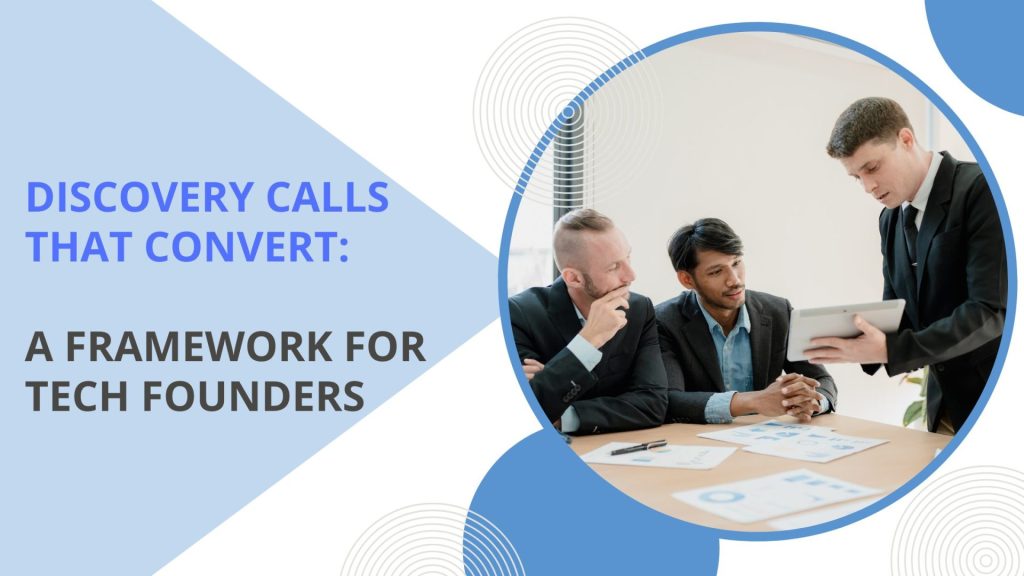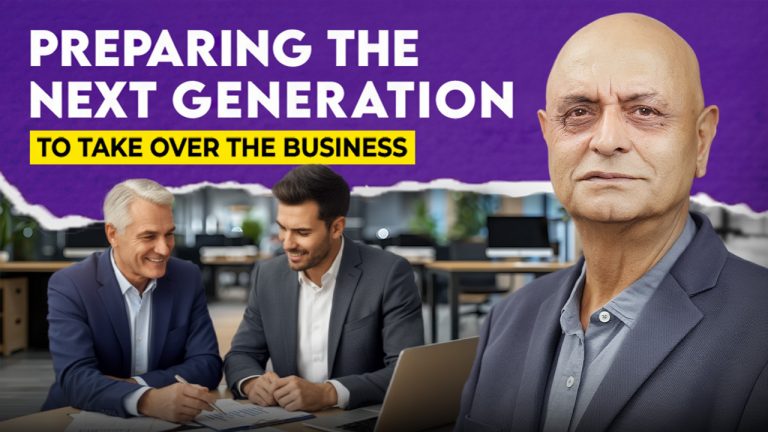Discovery Calls That Convert: A Framework For Tech Founders
You’re a Tech Founder. You Finally Got the Meeting…
The Zoom camera turns on. Your prospect appears, smiles politely, and says, “Great to meet you.”
This is it. Your chance to shine.
You dive in with your pitch, highlighting the features, the innovation, the scalability… all the good stuff. Twenty minutes later, you realize you’ve done 90% of the talking. And when it wraps, they say:
“Thanks—send us something to look at.”
Oof. That stings, right?
Let’s call it what it is—that’s not a discovery call. That’s a capabilities parade. And it rarely leads to a closed deal.
But don’t sweat it. This is super common, especially among technical founders who are passionate about their product. The good news? There’s a better way.
Why Discovery Calls Fail (And How to Flip the Script)
Hi, I’m Tabish Bibikar. I coach software founders to scale smart, starting with the one thing they can’t afford to get wrong: sales conversations.
Through years of study, hands-on experience, and learning from the top sales minds, here’s what I’ve learned:
🔑 The best discovery calls aren’t about presenting—they’re about listening and learning.
Too many founders think discovery calls are the time to “prove their value.” But in reality, prospects don’t care how awesome your product is—they care whether you truly understand their world.
That’s why I teach a simple, repeatable 4-part framework that transforms discovery calls from “meh” to “let’s keep talking.”
🔍 The 4-Step Discovery Call Framework for Tech Founders
Let’s break it down.
Step 1: Start with Context (First 5–7 Minutes)
❌ Don’t: Open with a pitch.
✅ Do: Start with curiosity.
Kick off by asking one golden question:
“What made you take this call today?”
Let them talk. Seriously, just zip it and listen. You’ll often get a far more honest and urgent reason than anything their assistant wrote in the meeting invite.
Why this works: People love to be heard. And this question surfaces their true motivations—the real pain point, not just a surface-level inquiry.
🧠 Pro tip: Take notes. Not just what they say, but how they say it. Are they frustrated? Curious? Under pressure?
Step 2: Dig Deeper (Next 15 Minutes)
Now that you’ve opened the door, it’s time to go deeper.
Here are some magic questions to pull out the real story:
- “What’s slowing you down right now?”
- “What’s the cost of doing nothing?”
- “What would success look like if this problem were solved in six months?”
- “How are you handling this issue today?”
- “What’s been tried already—and why hasn’t it worked?”
Why this matters: You’re not just looking for surface-level problems. You’re uncovering urgency, risk, opportunity, and the emotional drivers behind their decision-making.
👉 This part of the call is pure gold. It’s where trust is built and differentiation begins.
Step 3: Connect the Dots (10–12 Minutes)
Now that you understand their world, you can talk about yours—but only through their lens.
Don’t give them a feature dump. Instead, tailor your response with lines like:
- “From what you’ve said, it sounds like…”
- “Here’s what we’ve seen work in similar companies…”
- “Based on your workflow challenges, this part of our platform might really help.”
You’re no longer just a vendor—you’re a partner who gets it.
🎯 Highlight specific results. Use case studies if available. But only if they tie directly into their situation.
Step 4: Always End with Specific Options (Final 5 Minutes)
This is where most calls fall apart. The founder says:
“Cool! So… what would you like to do next?”
Ugh. That’s like handing someone a blank menu and saying “pick something.”
Instead, guide the next step. Offer clear, tailored choices like:
“Based on what we’ve discussed, I see three potential next steps:
- A technical demo with your engineering team,
- A solution outline addressing your workflow challenges,
- A meeting with one of our customers in your industry.
Which would be most valuable to you right now?”
Boom. You’re in control—but still giving them autonomy.
Real Results From Founders Like You
One of my clients—a small SaaS startup with a killer product—used this exact framework and saw their discovery call-to-opportunity conversion jump from 20% to 60% in just two months.
Did they change their product? Nope.
They just changed how they listened, learned, and led the call.
Because sales isn’t about slick pitches. It’s about guiding your prospect to real clarity and action.
Bonus: Common Mistakes to Avoid on Discovery Calls
Let’s hit a few potholes to dodge:
- Talking more than 50% of the time – Let the prospect speak!
- Focusing on features, not problems – Nobody buys software. They buy solutions.
- Ending the call vaguely – Always land the plane with clarity.
- Not doing research – Go in knowing their role, company stage, and recent updates.
- Skipping follow-up – Recap the call and confirm next steps via email within 24 hours.
What You Can Do Today
Before your next discovery call, prep like this:
✅ Read up on the company’s current goals, product stack, and recent news
✅ Jot down 5 powerful discovery questions
✅ Plan 2–3 case studies or success stories you can reference
✅ Prepare 3 tailored next-step options to close the call with purpose
Remember, you’re not trying to “win” the call. You’re trying to uncover truth, build trust, and invite the prospect to take one step forward.
FAQ: Quick Answers for Founders
Q: What if the prospect just wants a demo right away?
A: Acknowledge it, but redirect: “Absolutely, and I want to make sure we tailor it to what matters most. Can I ask a few quick questions first?”
Q: What if they don’t know their pain points yet?
A: Dig into process. Ask what’s working, what’s not, and where they’re spending the most time. Pain often hides in inefficiency.
Q: Can I use this framework for enterprise deals?
A: 100%. Just expect deeper conversations and more stakeholders. Customize accordingly.
Q: Is this too scripted? I want to sound natural.
A: Think of it as a structure, not a script. Flex it to your voice—but stick to the flow.
Ready to Close More Deals—Without Sounding Like a Salesperson?
Discovery calls can make or break your pipeline. And when done right, they don’t feel like sales at all.
They feel like smart, honest conversations—because that’s what they are.
So, whether you’re selling an AI engine, a DevOps platform, or the next unicorn SaaS tool, use this 4-step framework to guide your prospects from curious to committed.
If this clicked with you, go ahead and share it with your sales team, co-founders, or that one friend who always rants about “leads ghosting him.”
And hey—follow along for more frameworks that help founders scale without selling their soul.










